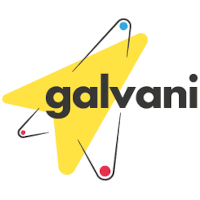
01 Mar PostDoc/Phd – Non-invasive Measures of Brain Excitability
Context
The GALVANI project (https://www.galvani-lab.eu/) is a European research project (ERC SYNERGY 2020) aiming at developing non-invasive brain transcranial current stimulation (tCS) in epilepsy. Cumulated prevalence of epilepsy is 3% and about one-third of patients are drug resistant. This situation leads to major handicaps and comorbidities. In focal DRE, epilepsy surgery may be indicated if a focal resection is possible, a decision often taken after invasive EEG recordings (Stereo-EEG, SEEG). However, epilepsy surgery is possible in only 20% of DRE patients and is facing a certain number of failures. In this context, tCS is a promising tool in patients with drug resistant epilepsy (DRE). Still, it is not yet indicated as a standard treatment due to major scientific limitations: unknown mechanisms of action, insufficient account for patient-specific factors, poor understanding of short- and long-term effects. The ambition of the GALVANI project is to transform the care of a large fraction of patients living with drug-resistant epilepsies by solving a fundamental problem: to efficiently target and control large-scale epileptic brain networks with tCS-induced neuromodulatory weak electric fields.
Scientific Environment
GALVANI involves three partners: LTSI-Inserm (Rennes), AMU-APHP (Marseille)and Neuroelectrics (Barcelona). It is intended to develop the next generation of brain stimulation solutions. GALVANI can be viewed as a distributed lab (Rennes-Barcelona-Marseille) working under a common policy to ensure coherence of research and intense collaboration and cross-fertilization. Fellows will be co-supervised in a unique, shared environment with exposure to science, technology and clinical experience
Within the GALVANI project, the Marseille team is specialized in the management of epilepsy at Timone Hospital in the Epileptology and Cerebral Rhythmology department (Head Prof. F Bartolomei) with a strong expertise in SEEG explorations. The hospital department houses a research team from the Institut de Neurosciences des Systèmes (INS, INSERM AMU 1106, DYNAMAP team, dir C. Benar, https://ins-amu.fr/dynamap) specialized in the analysis of electrophysiological signals (SEEG, MEG, EEG).
We are looking for several candidates (PhD or Postdocs) that can complement and extend the DYNAMAP team’s expertise in the GALVANI Research project.
Contacts:
Christian Bénar (christian.benar@univ-amu.fr)
Fabrice Bartolomei (Fabrice.Bartolomei@ap-hm.fr)
Position 3: Post-doc/PhD “Non-invasive measures of brain excitability” (3y)
Planned recruitment: Jan 2021
Rationale:
Magnetoencephalography (MEG) and electroencephalography (EEG) are complementary non-invasive measures for characterizing epileptic networks. MEG has high spatial specificity, being little influenced by skull conductivity (contrary to EEG), but is much less sensitive than EEG to radial sources than EEG. Within the GALVANI, MEG and EEG will provide a global view of brain activity.
Moreover, improving the fusion of EEG and MEG with validation by SEEG will improve clinical practice in a general way.
Objectives:
Perform EEG/MEG data fusion for localizing activity and charactering epileptic networks. Thanks to this fusion, the methods developed in projects 1 will be performed on simultaneous EEG/MEG for testing the impact of tCS on brain activity in a global way.
Methods:
We will try several methods for localizing the nodes of epileptic activity with both EEG and MEG: Minimum norm, MUSIC, ICA and Maximum entropy on the mean (MEM). Then network measures will be performed on the estimated time course at each node. The results will be validated with SEEG and compared. The best method will be used to test the impact of tCS in the multicentric clinical trial launched in Galvani.
Required skills:
Electrophysiology, magnetoencephalography or electroencephalography, epilepsy, signal processing, programming in Matlab or Python. Good capacity to work in a team.
Please click here to learn more.


Sorry, the comment form is closed at this time.